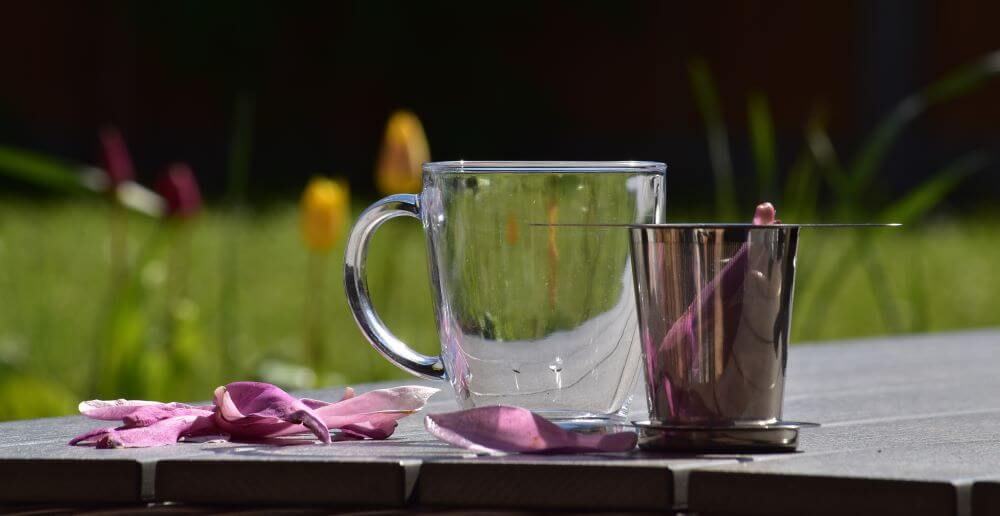Out and About, Recipes, Uncategorized, using our products
Teas To Try This Spring
We have picked up some wild drinking habits recently.
Healthy ones, though: wild teas!
Well, to be honest, wild in this case refers to being foraged from the wild. But they actually might very well be picked from your own garden. Or from someone else’s. With their permission, of course.
And as for the tea, there is none. These are actually tisanes, also known as infusions.
But as beverages made from the infusion or decoction of plant material in hot water just doesn’t sound quite as nice, we’ll stick with wild teas.
Why drink these wild teas?
The health effects of various freshly brewed teas are widely discussed on the internet. Google and you’ll see. We do not suggest that we are able to judge any of these claims to be true or false. We think you should try these teas for the fun and flavour of it, in the first place.
But, just taking the time to get into nature, find some lovely leaves or flowers, brew yourself a unique cuppa and enjoy it, I would say is beneficial to your overall well-being. And I am sure there is scientific research to back that up. Somewhere.
Which teas to try?
So far, I have tried four teas since we had our lush new tea infusers delivered. (They’re not a necessity, but they were an inspiration. Their shape and size just make it so easy to toss in anything, while the fine mesh ensures you’re not drinking any unwanted bits.)
The options are endless, you just need to make sure you know what you’re picking. When in doubt, don’t drink it. It might easily be poisonous enough to make you sick.
These four teas seem a good starting point, as they offer a nice variety, with two leavy and two flowery ones, and they are all readily available and easily recognisable.
Magnolia
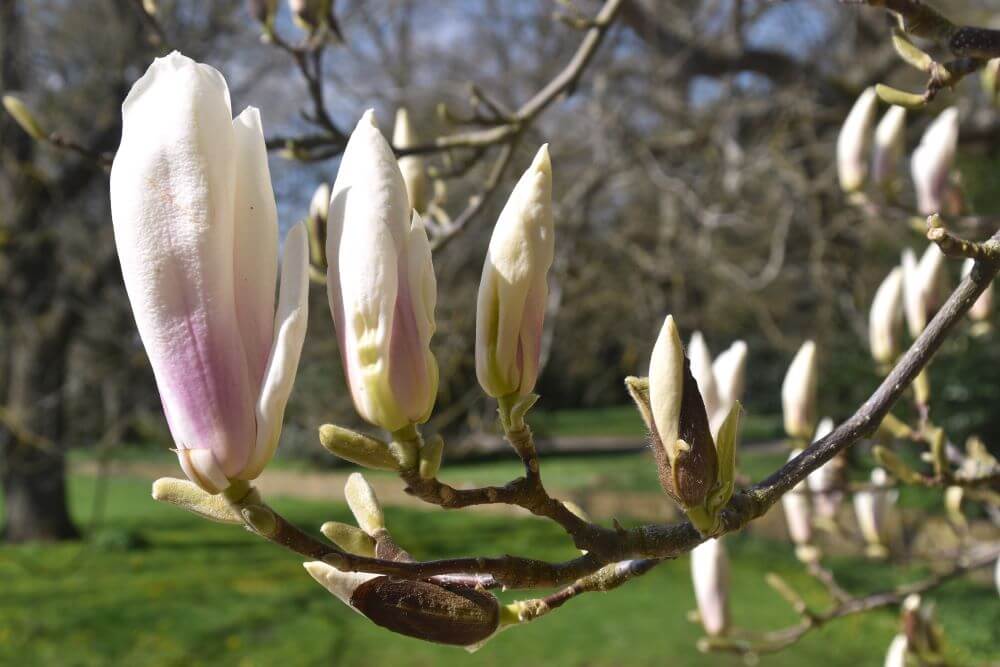
A flowering magnolia tree is a sure and lovely sign of spring. Apart from pretty, their flowers are also edible. You can eat them raw, in salads for example, or pickle them. You can boil them into a syrup or lemonade (though, technically, I suppose it would be a magnoliade), but much easier is to brew them into a tea.
Among the benefits mentioned of magnolia are some relief of seasonal allergies and asthmatic complaints and a relaxing effect on both mind and body.
They may flower as early as March but are typically in full bloom between April and June. One flower will be more than enough for a cup of magnolia tea, but you can also use already fallen leaves -as long as they look fresh and unblemished- if you do not want to pick this beauty. Some may also flower a second time in August, so if all magnolias in your neighbourhood seem to have lost their flowers already, there will be second chance to try this tea in summer.
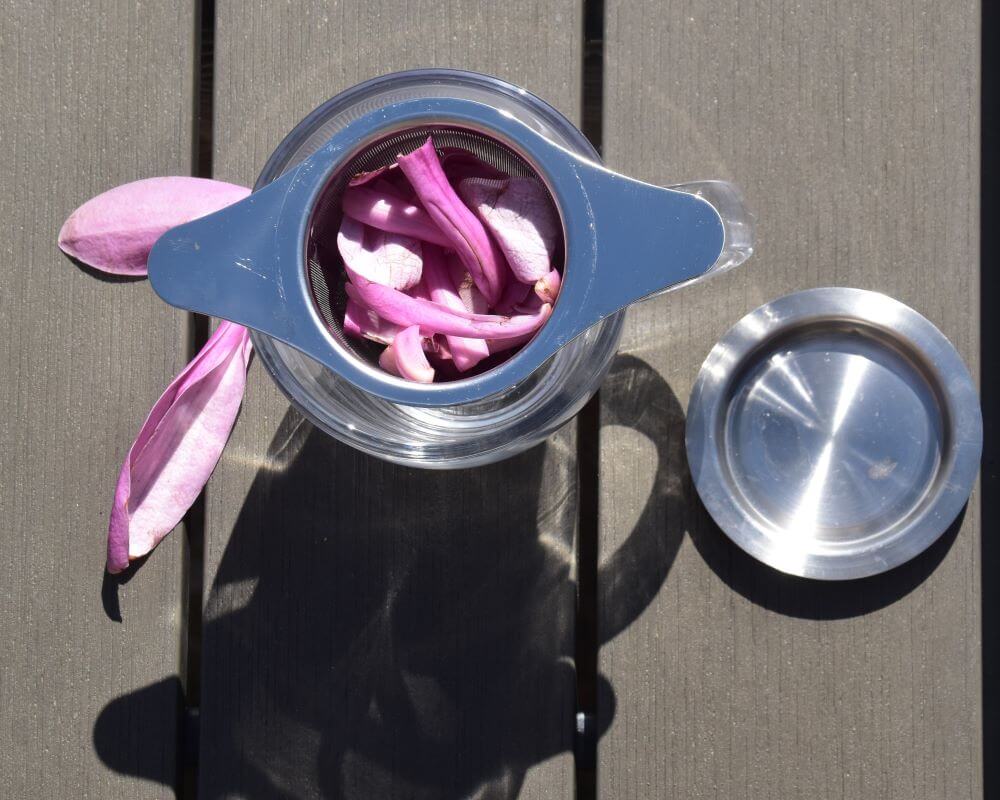
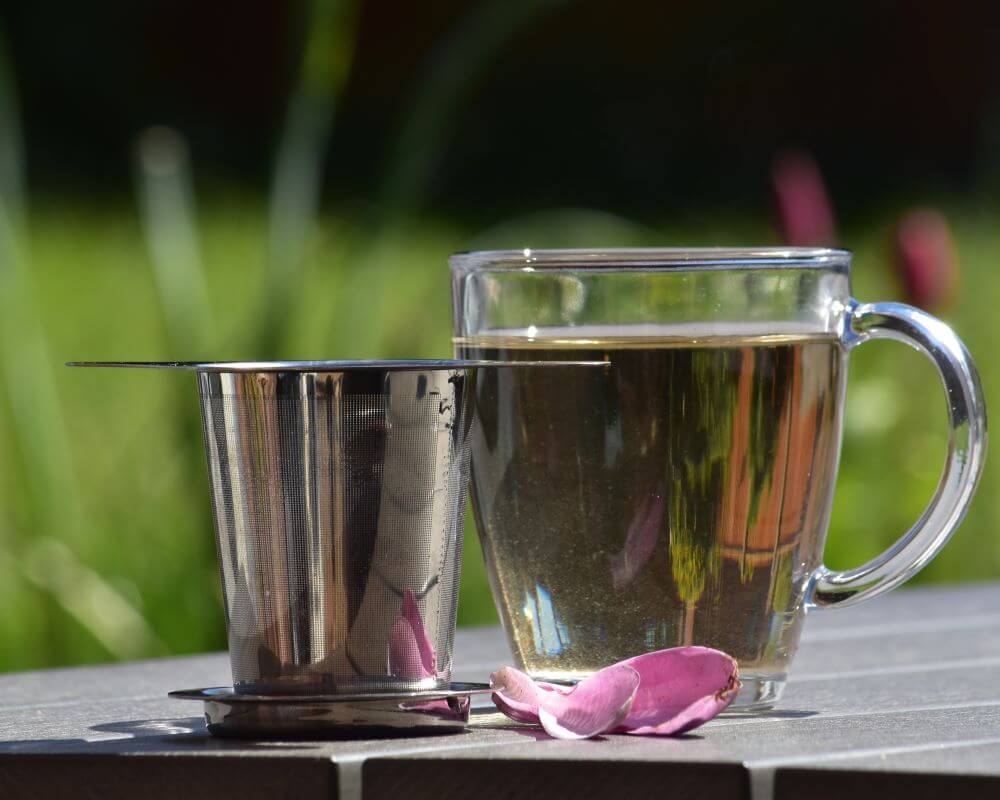
Its flavour is … well, flowery, I’d say. It’s often described as gingery with a slight hint of citrus. Personally, I found it not quite that. It has a distinct sweetness and a rather unique flavour, vaguely reminiscent of perfumed treats from the Middle East. Or at least the cup I tried had. But then again, there are about 300 different kinds of magnolia, so perhaps they all vary slightly in taste. Better try it yourself.
Pine needle
Needles on a tree are easy enough to recognise. You can use almost any, except the larch’s. To be sure: check whether needles grow per one, per two, or per bunch on the branch. One and two will be fine, but the bunch is the larch, which is the only poisonous branch of the needle family, so you’ll want to steer clear of that one.
If you have a choice of several trees, you can rub and smell some needles to determine your preference. I am told that the douglas fir is particularly flavourful, but I have not yet had a chance to try it myself. (It’s the one which’ cones look like they have mice hiding in it, their hind legs and tails just sticking out. (Whether they are fleeing fire, snow or a fox remains undecided.)) Pick a handful of needles for a cup or, as I did, go for a walk after a stormy night and pick up a small fresh branch from the forest floor.
Pine needles are said to contain high levels of vitamin C and A, and to be beneficial to the respiratory system. Their tea is therefore especially recommended to both cure and prevent coughs and colds.
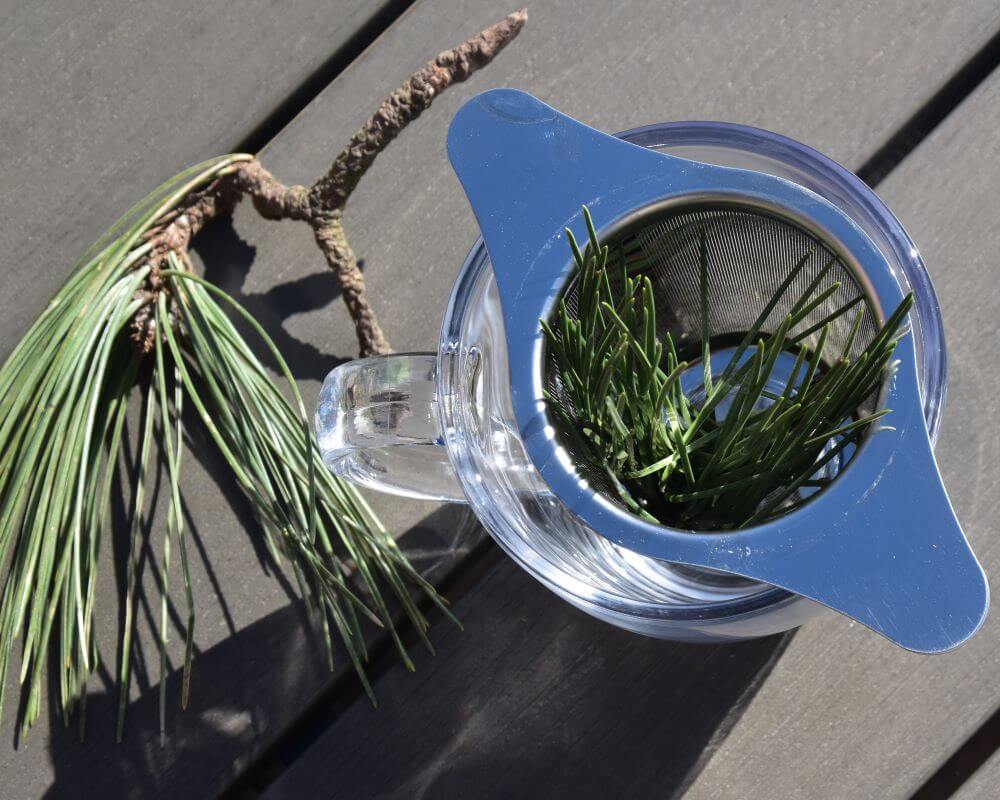
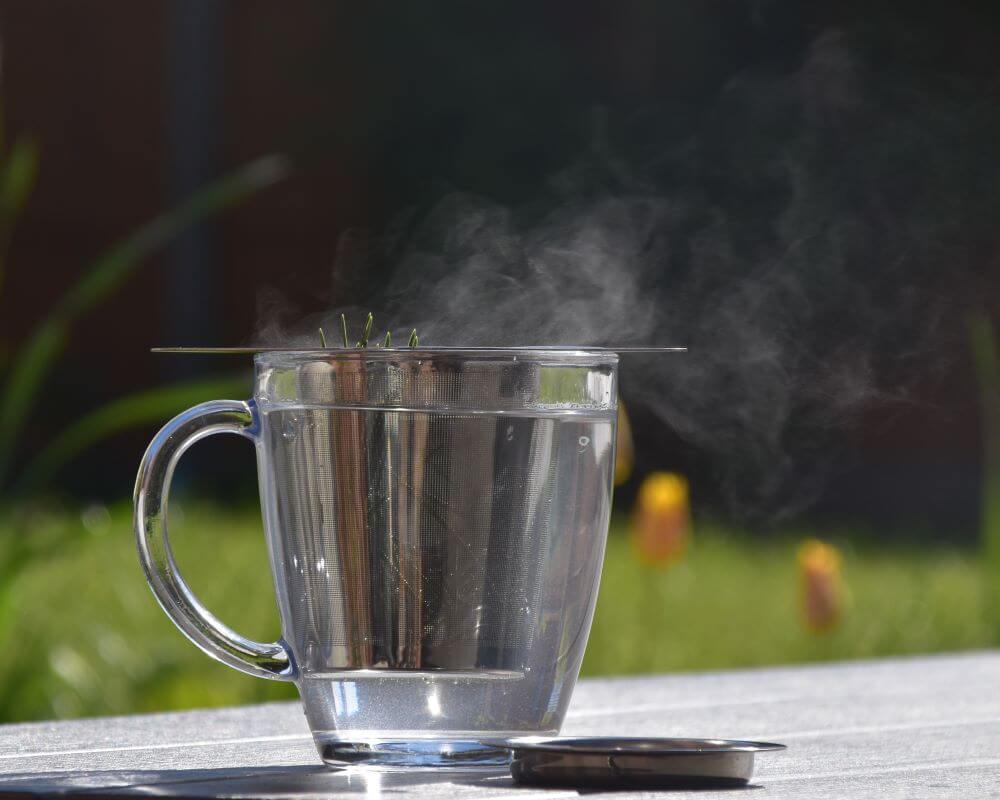
It tastes just like a walk in the woods. Really. I have no better way to describe it. Though I used to make fun of flavours being described as colours, this tea certainly tasted green to me, with a warming hint of lingering winter.
Dandelion
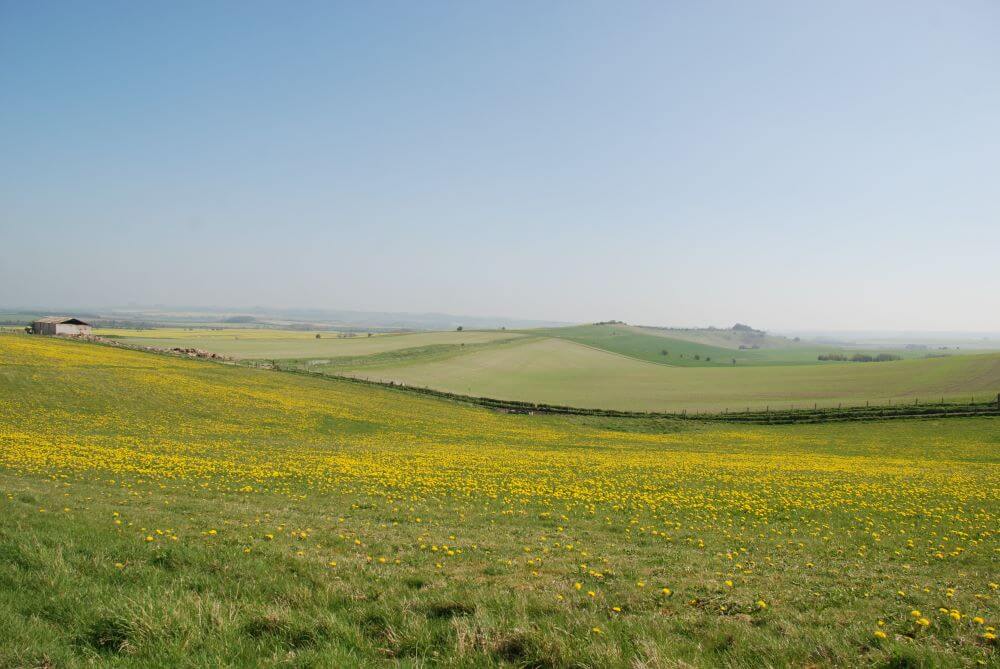
If anything is abundant in spring and easy to recognise, it’s dandelions. They typically grow in large fields full of them, or in places where they’re actually not wanted. The first ones to appear early in spring are best left to feed hungry pollinators, but when you happen upon a completely yellow field, or need to get rid of some trying to take over your garden (oh, they will if you let them), you need not feel bad about picking a few flowers for a fresh cuppa. You can actually also toss in the leaves and roots of this plant, or eat any of these parts, so if you have to pull them out, consider using them, rather than just throwing them out. The stalks won’t be any good, though.
Dandelions are said to be mostly rich in vitamin A and potassium. Dandelion tea is supposed to support the immune and digestive systems and an excellent addition to any detoxing schemes.
Using only flowers, this tea has a mild flavour. And for me, it had the most ultimate spring-feeling. Next time, I might add some mint to boost flavour a bit.
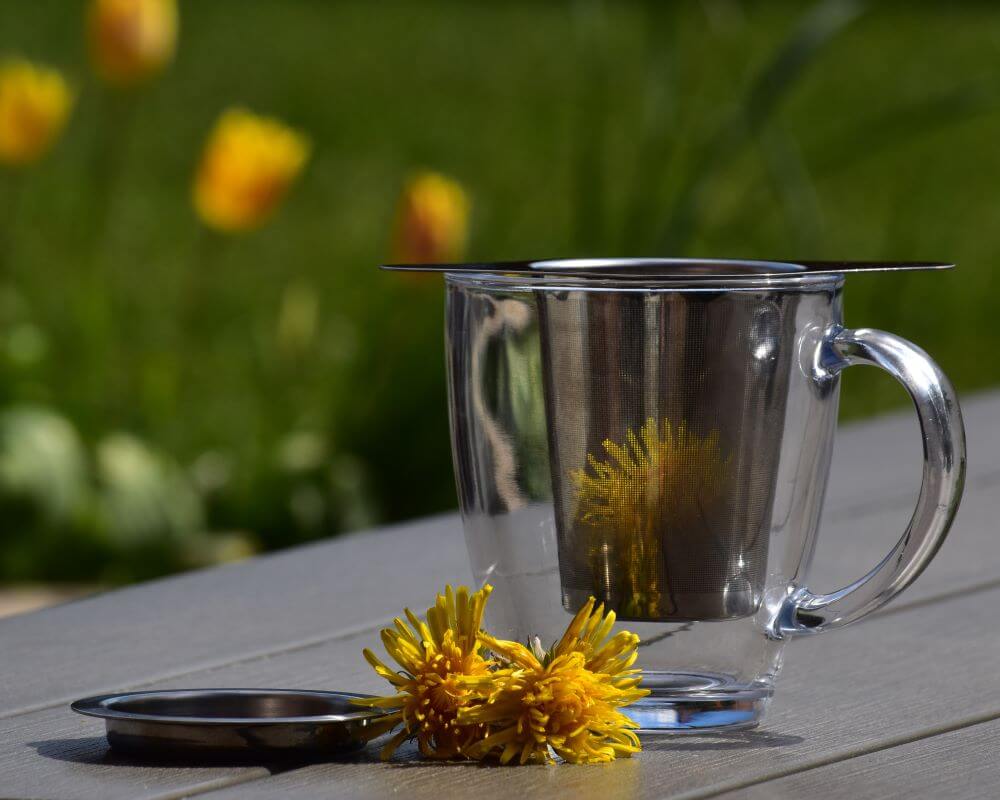
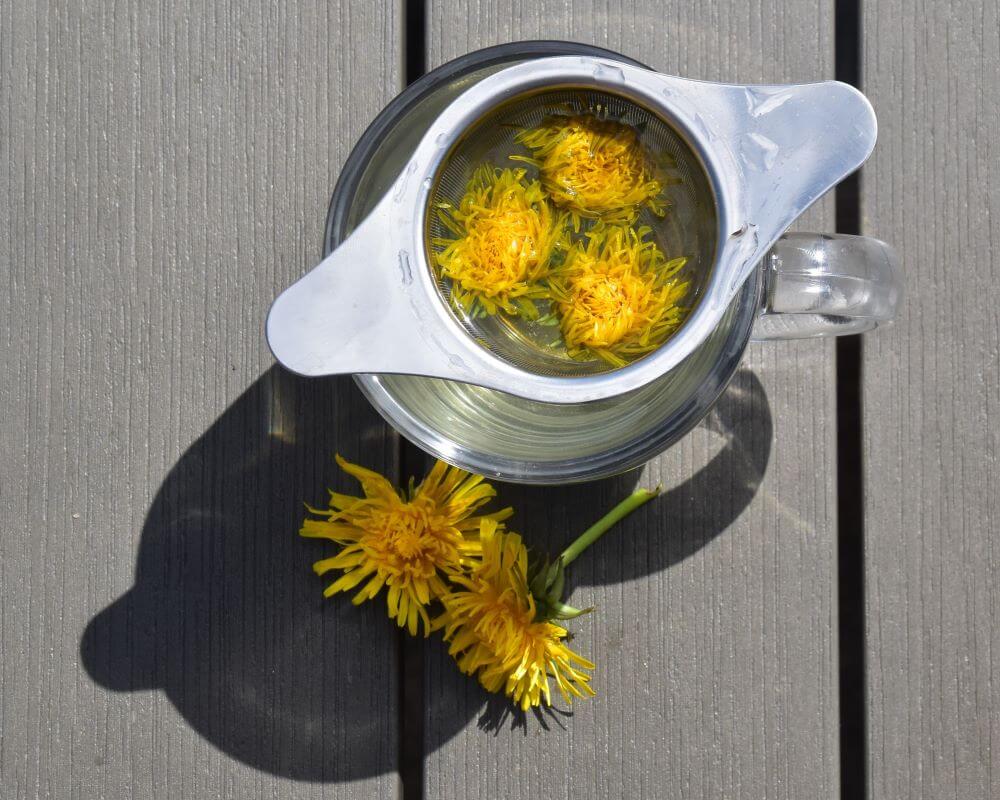
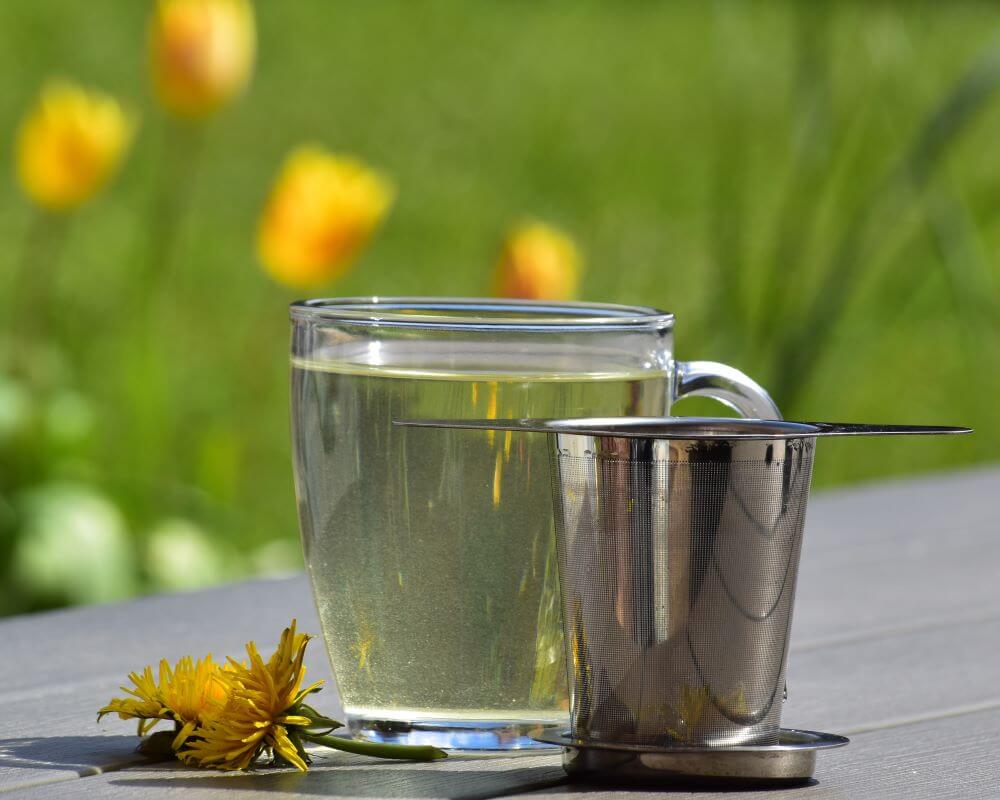
Nettle
Just like dandelions, nettles very easily spread in the wild and we all know how to recognise them. Be careful when picking these, for you don’t want to get stung. A few fresh tops will do for a cup of tea.
The most remarkable attribute of nettles is their antihistamine. This suggests that if you have a regular cup of fresh nettle tea early in spring, you should suffer less from hay-fever. They are also said to be rich in antioxidants.
Nettle tea has a nice fresh, slightly herby flavour. An easy drink and probably a good base to add other plants (such as dandelion) to.
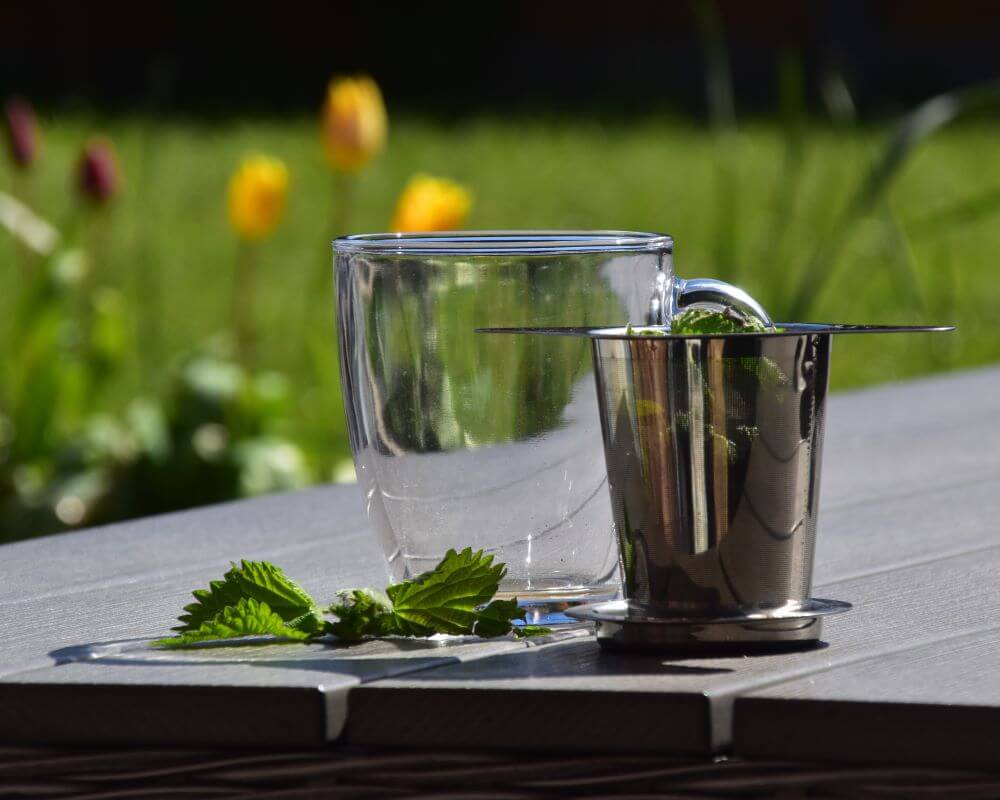
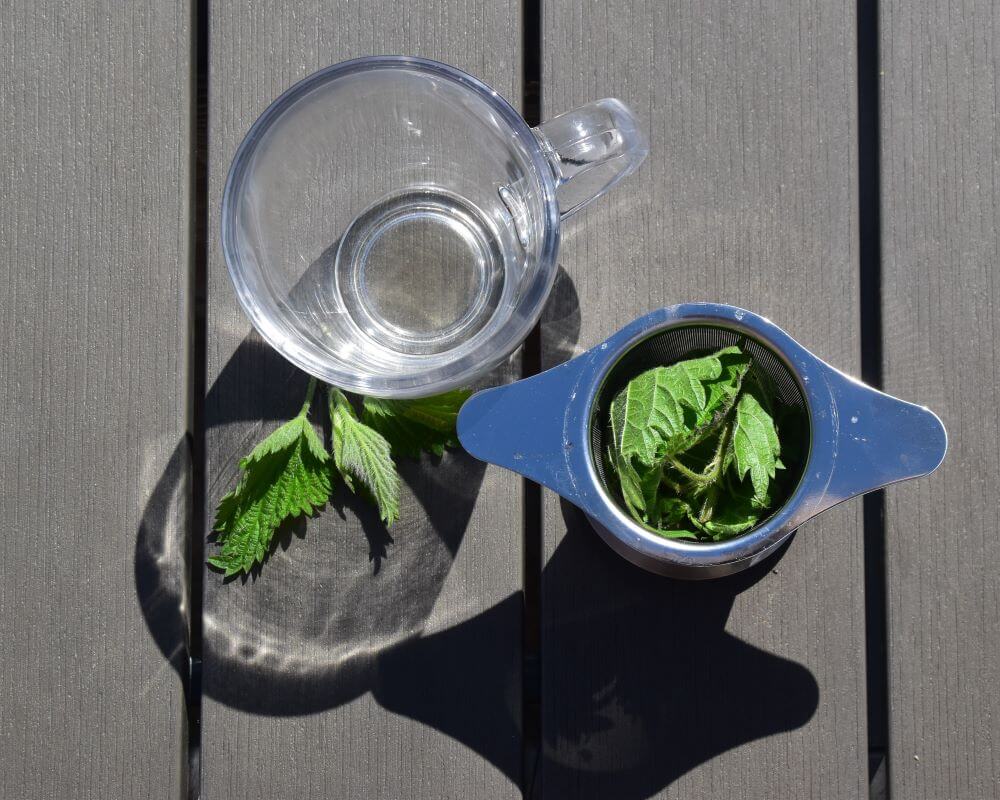
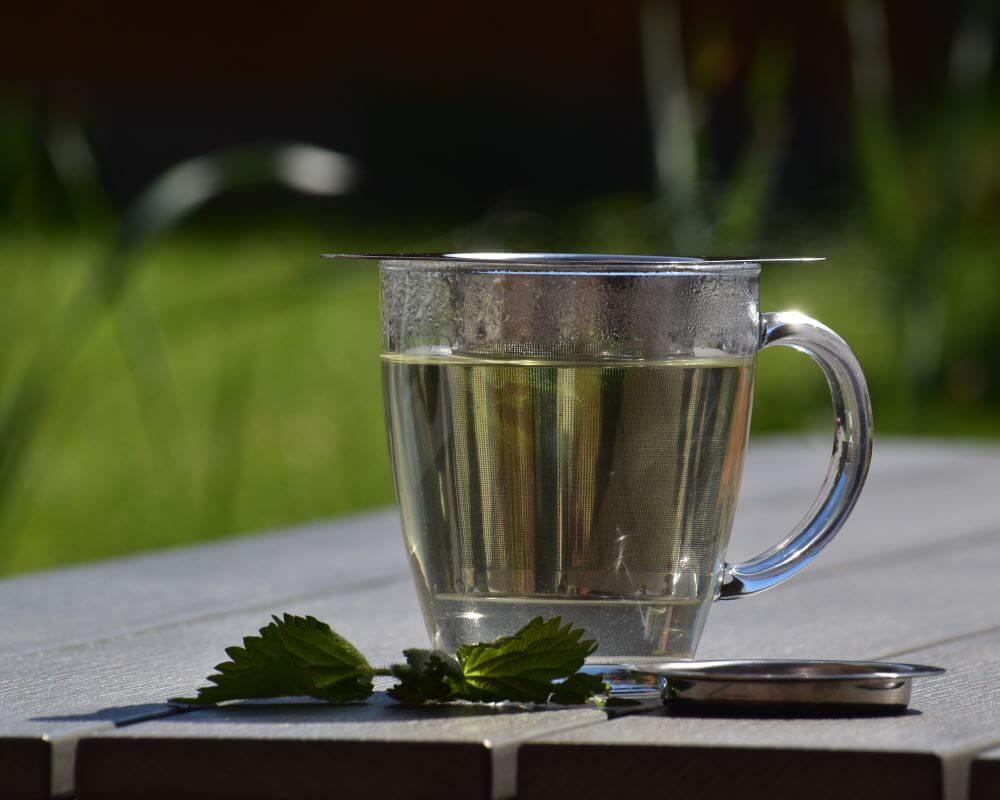
How to brew these teas
For all these, and other fresh teas, goes that you simply poor hot water over your ingredients and leave it to brew. Typically, they’ll need a bit longer, 15-20 minutes, to come to full flavour, but how strong the flavour will turn out also depends on how fresh and how young your ingredients are. Furthermore, you can enhance flavour by breaking up leaves or petals, instead of tossing them in whole. Depending on where you got them, you may want to wash them, rinsing thoroughly with cold water, before using them.
Once you’ve tried a few and have gotten familiar with their flavours, you can start mixing and experimenting with different combinations. We’d love to hear about your favourites in the comments!
A note on foraging
When foraging, there are a few things to always bear in mind:
- Make sure you know what you are picking
- Make sure you’re allowed to pick there
- Make sure you leave plenty behind
- Make sure you don’t damage surroundings
- Make sure you’re not picking at a dog walkers’ favourite spot
You can also check the Woodland Trust’s guidelines for foraging.
P.S.: If you like brewing your own hot drinks, also check out this lemon ginger tea.
And if you’re interested in more foraging ideas, why not read our post on rose hip jam?

